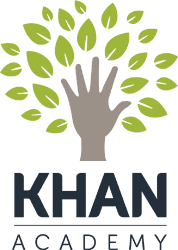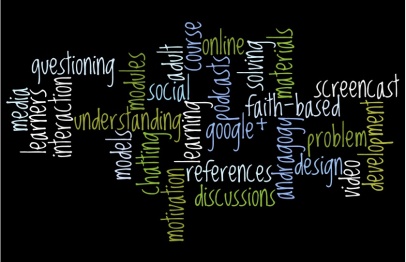Focus Questions for Chapter 1 and 4 (Waterhouse, S. A. The power of eLearning) and CMS/LMS Investigation
- Central to our investigation of eLearning Technologies and Methods is gaining an understanding of Learning Management Systems (LMS) sometimes also called Course Management System (CMS) software. Chapter 1 of our text discusses the functionality of typical LMS/CMS, identifying four major categories. What are those categories?
According to Waterhouse, there are four LMS functionality categories:
Distribution of Course Information and Web Access: This includes announcements, course syllabus, course documents, reading materials, and course notes. Utilizing an LMS will decrease the cost of instruction delivery because they are designed to be more efficient (Waterhouse, p.14).
Electronic Communication: Online learners are expected t communicate and collaborate with others. A LMS will include discussion boards to preview or summarize topics, online tutoring, online chatting.
Interaction with Content and Web Access: Online learning facilitates student interaction with course content. This could come in the form of online field trips, web-based research, online simulations, video clips or audio clips.
Online Testing and Grading: This includes self-assessments which has the potential to improve learning. Waterhouse stated, “lack of effort—that is, time on task—is quite often the root cause of academic difficulty” (p.13). Students are held accountable for their online learning because some Learning Management Systems could track how much time a student spends on a learning task.
- Use the Internet to find three different course management systems. Provide the name, a URL and a brief discussion of what you can find out about the similarities and differences between the three that you find.
Google Classroom is a CMS that has the four categories of functionality listed above. There is an announcement feature which an instructor could utilized to upload course documents, videos, notes, and links. There is an assignment feature where students are able to submit assignments. Instructors could select due dates and times, thus holding students accountable for submitting work on time. There is a comment feature, which could be used as a discussion area.
The website states– Classroom is designed to help teachers create and collect assignments paperlessly, including time-saving features like the ability to automatically make a copy of a Google Document for each student. It also creates Drive folders for each assignment and for each student to help keep everyone organized.
Students can keep track of what’s due on the Assignments page and begin working with just a click. Teachers can quickly see who has or hasn’t completed the work, and provide direct, real-time feedback and grades right in Classroom.
This CMS is still pretty new and is constantly changing as they add features to it. Site URL: www.classroom.google.com
Blackboard functions as a full CMS. As a student at CSUSB, we are very familiar with its functions. There is a course documents feature, chat function, small group function, assignment feature, and grade report feature. It is flexible to what the instructor needs. Blackboard’s goal is to make learning more desirable, accessible, and meaningful for learners. Site URL: http://www.blackboard.com/
Haiku is very similar to Blackboard. It’s website states- Haiku Learning revolves around your content. Create classroom pages, add and organize content blocks, change layouts, and publish whenever you’re ready. Embed content from YouTube, Google Docs, Maps, Skype and dozens of other third-party services or create your own from scratch. And when you’ve crafted the perfect classroom page? Resource sharing in Haiku lets you share your classes, pages, and content blocks with any other Haiku user–and use content in your own class created by other teachers.
Site URL: http://www.haikulearning.com/
- If you were going to create an online class right now, what LMS/CMS software would you use? Explain what you know about your system’s functionality in each of the four areas identified by the book. (If you don’t have access to LMS/CMS software just use Blackboard for your discussion in this area.)
If I were going to crate an online class for my sixth graders right now, I would use Google Classroom. For eleven year olds, I think it’s easier to manage because there aren’t separate tabs to locate documents. Google Classroom allows a teacher to do two things: create an announcement or create an assignment. But, there is so much you can do within creating an announcement or assignment. For example, I could assign a project for my students to complete. Within the assignment, I can group all of the necessary documents such as the project procedures and grading rubric. I could attach a sample project all within the assignment itself. Students will have all of the necessary tools for that one project in one location and not have to navigate through course documents, syllabus, grading rubric, or other tabs to figure out what is required to complete their task. Another neat feature is that within that assignment, students could comment (if I have enabled that) and carry on discussions or communicate with me.
- Chapter 1 of our text identifies six steps for getting started with eLearning. Discuss each step and use each step as a springboard for discussing what you want to do with eLearning either now or in the future.
Ask yourself why As an instructor transitions to innovative teaching methods by using eLearning, the instructor must identify why such a transition is necessary. Our text tells us that the major motivation for adopting eLearning is to enhance teaching and learning. Since there are many aspects to eLearning, I would need to identify how much of it to incorporate into my daily teaching. For instance, I would like to use blogging in my traditional sixth grade class as a means to teach them about online communication and to deepen understanding about various content areas.
Make a commitment Where there is a change, there is also a commitment to learning how to implement that change. Our text reminds us that making the switch to online teaching will not happen overnight and that we should be realistic about the time needed to design and implement eLearning. What I have become committed to doing is to be present in my student blogging. I aim to comment on at least five students per assignment.
Develop a new vision for your course and how you teach Instructors shouldn’t utilize technology just because it is there or because it is the next big thing. Our text says, “Instead, make sure that the technology adds value to your course content and delivery” (p.24). As I started incorporating blogging into my classroom routines, I have had to make adjustments to be more efficient in relaying messages to my students and maintaining organization. For instance, when I started my blogging platform, I created a “Read First” post that contained all of the requirements for a high quality blog as well as the timeline. However, my students are young and never went back to that “Read First” post after they had posted the first post. That resulted in late, low quality postings. To make adjustments, I included the blog requirements in all future assignments. I also included the grading rubric so students would be aware of how they would be graded. I chose to use blogging as a weekly routine because I wanted to give students a chance to reflect on what they are learning throughout the content areas. This is one way students are able to keep a record of their learning and to collaborate with other students.
Determine the resources available to you Waterhouse reminds us that we should have a realistic view of the limitations of the resource available to us. As educators, we could talk with other colleagues about what resources are available and possible ways to acquire newer, advanced resources. In my classroom, students have access to twenty Chromebooks and ten iPads. Students are also able to bring their own tablets or laptops from home if they fill out a District Technology form. Having such a variety of resources allows me to incorporate many aspects of eLearning, which will help them with their success in Middle School, High School, and beyond.
Acquire new technology skills and develop new instructional methods It is necessary to invest time to learn new skills and develop new teaching methods when one is adopting eLearning. I have acquired valuable skills and knowledge through the Instructional Technology program and have also participated in professional development workshops to help me develop my skills in using aspects of Google Drive.
Plan Our text states, “Your plan should be based on your instructional goals, your skills, the time you have available, the technology tools at hand, and the support your institution can give you” (p.26). In other ETEC courses, where I had to design a lesson or develop aspects of eLearning, the planning phase always took the longest. We learned about using the ADDIE model when designing lessons. The analysis phase is essential to the planning of designing a lesson or learning tool. I was taught to state the educational goal, the necessary technology needed, and the amount of time the lesson or project would take.
- Chapter 4 of our text discusses the functionality of specific LMS/CMS tools in terms of being for one-way communication, two-way communication or for organization. Explain the key differences between one-way and two-way communication.
One-way Communication- When a message is sent, a reply is not required. Some examples of one-way communication include announcements, videos, audio podcasts, shared files, gradebooks, calendars, and “do not reply” emails. These examples are created or uploaded by the instructor for students to view/read, but do not require the student to provide a comment in return.
Two-way Communication- Some messages are sent with openness for a response. Discussions are a form of two-way communication. Whiteboards within an LMS are also an example of two-way communication. This feature allows students to share work that cannot be typed, such as mathematical equations. Instructors post online tests and quizzes the students are to respond to the questions and submit.
- Identify the primary tools your LMS/CMS provides for one-way communication. Briefly describe a method that would make use of the most important tool from your list.
Google Classroom has an Announcement feature. I could use this feature to upload videos, share external links, and share files. I could also just post an announcement to let my students know to study for an exam or to bring a certain tool to class the next day. Although there is a comment section in the announcements, it is not necessary that students comment on each file I share with them. When students submit assignments in Google Classroom, I can provide a grade with feedback. That is also a form of one-way communication.
- Identify the primary tools your LMS/CMS provides for two-way communication. Briefly describe a method that would make use of the most important tool from your list.
The method of two-way communication in Google Classroom is in the Assignment feature. I post the assignment along with the needed tools and grading rubric. Students in turn, submit their completed assignments in the Assignment section. If I make a discussion part of the assignment, students could use the comment feature to post their initial thoughts and use the reply feature to respond to other student responses.
- Consider how a CMS/LMS supports the three types of interaction (Student-Content, Student-Instructor, Student-Student) that were discussed in the first session 1 presentation. Using the list of tools you created in items 5 and 6, identify the best or most important tool for each type of interaction, explain what you know about the strengths and weaknesses of each tool to support the type of interaction you identify for it.
One-way Communication- The most important tool would be the sharing announcements. This creates Student-Content interaction as the instructor posts links to instructional materials. Organization is the strength of an announcement tool. Students are able to go to a certain date or module and view what the necessary readings or tools are for an assignment. A weakness is that instructors trust that students are accessing the announcements, but that is not always the case.
Two-way Communication- The most important tool would be the discussion feature of a LMS. This allows students to interact with one another as well as with the instructor, so long as the instructor is present in the discussion. The strength is that discussions promote student interaction and collaboration. Going back to what Waterhouse wrote in Chapter 1, the amount of effort in eLearning is measured by the amount of time spent on a task. The weakness is that some students are not motivated to participate in discussions and post the minimal amount of work. This makes it difficult to have meaningful learning experiences using discussion boards.






 YouTube.com
YouTube.com




